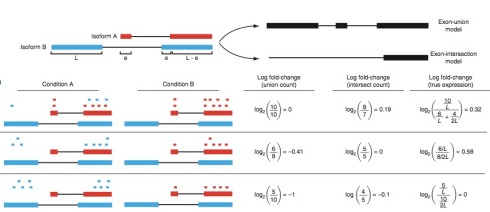We have right now an internal lab discussion, a bit of classic "mapper wars" case. What is better, eg in the sense "closer to real biology":
HTSeq (opponents claim: "does not do counting well in case of overlapping genes")
RSEM on the level of gene summaries... - is the model there good enough to distinguish where the read is from in case of overlapping genes? If so - is this advantage so important that we should give up HTSeq?
I was defending a bit HTSEq side, as I know that SimonA. knows well what he's doing and RSEM is more for transcript de-convolution not for gene-level counting... but I run out of arguments.
Did anyone do a comparison like that or has a good intuition to help?
Any suggestions welcome! Thanks!
HTSeq (opponents claim: "does not do counting well in case of overlapping genes")
RSEM on the level of gene summaries... - is the model there good enough to distinguish where the read is from in case of overlapping genes? If so - is this advantage so important that we should give up HTSeq?
I was defending a bit HTSEq side, as I know that SimonA. knows well what he's doing and RSEM is more for transcript de-convolution not for gene-level counting... but I run out of arguments.
Did anyone do a comparison like that or has a good intuition to help?
Any suggestions welcome! Thanks!
 What was the species? H.Sapiens?
What was the species? H.Sapiens?
Comment